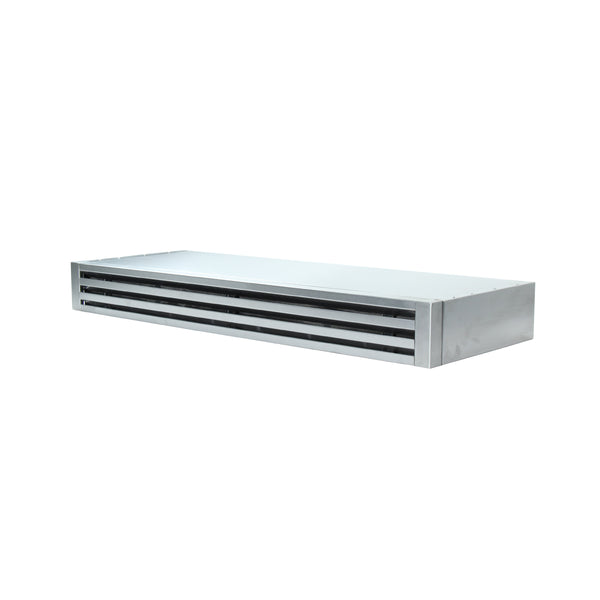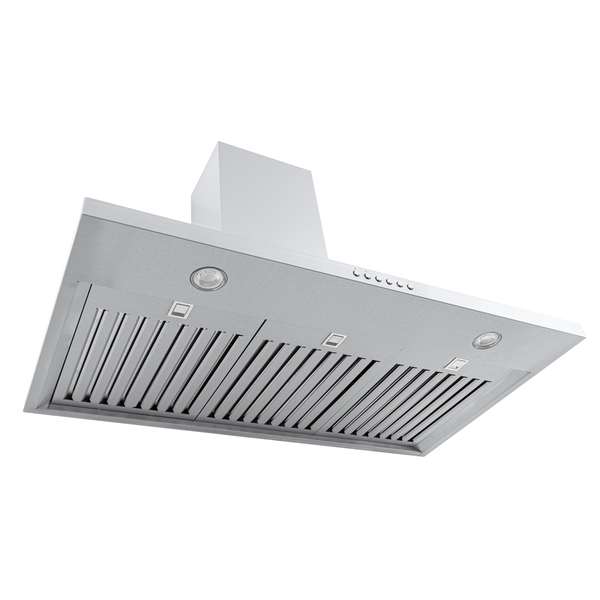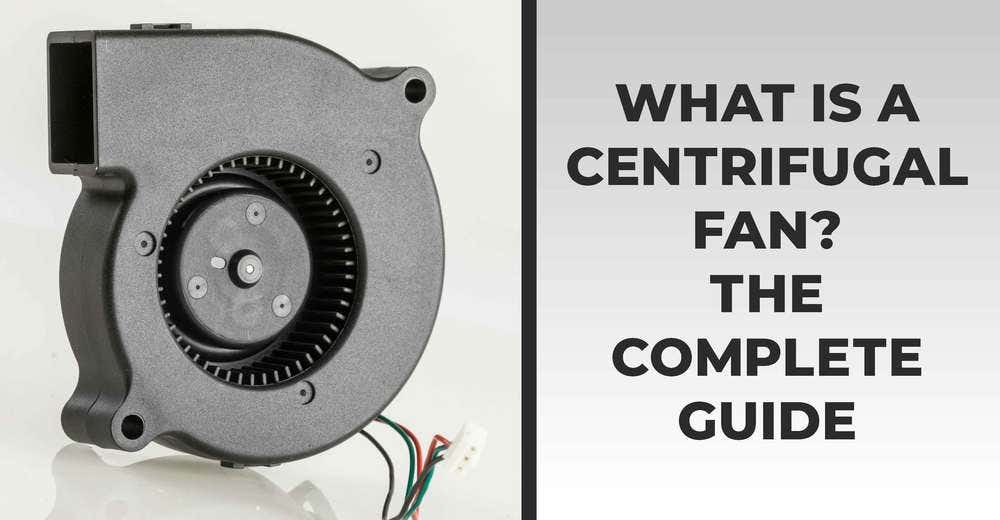A centrifugal fan is one of the most efficient fans on the market today. Most people think of a centrifugal fan as just a fan; its intricacies are not exactly common knowledge.
This complete guide will tell you everything you need to know about centrifugal fans. You might be wondering ‘What is a centrifugal fan? What are centrifugal fans used for? What are the different types of fans?
We will answer these questions and more. We’ll also highlight several useful videos from HVAC experts who break down these concepts in great detail.
What is a centrifugal fan?

A centrifugal fan or centrifugal blower is a pump or motor that moves air. It pulls the air inside the blower and then pushes it out at a 90º angle. The two main components of a centrifugal fan are the motor and the impeller. An impeller sucks or pulls air, in contrast to a propeller which pushes air.
Some fans can pull and push air at lower than a 90º angle; these fans are called mixed flow fans.
Centrifugal fans can either have no exterior housing or structure to offer protection or they can be built with some protective housing.
As shown in the video below, there are five different types of centrifugal fans, which differ based on the type and shape of the fan blades.
- Backward curved blades
- Backward inclined blades
- Backward inclined aerofoil blades
- Radial blades
- Forward curved blades
Here is a diagram to help you distinguish between these types of centrifugal fans.

Each blade type varies in terms of efficiency – in other words, how fast the fan moves air through the duct or system where it’s installed. The most important thing to know is that backward curved blades are the most efficient, whereas forward curved blades are one of the least efficient types of fans.
The video below discusses small low pressure centrifugal fans, which can move air quickly at a pressure between about 100 and 2,000 pascals.
What is a pascal?
A pascal is a standard unit of pressure, equivalent to one newton per square meter.
Here’s that video we promised.
What are centrifugal fans used for?

A centrifugal fan is typically used for residential applications to move air through a duct in your home. Think of your air conditioning system, furnace, or range hood duct. You also might see these in commercial environments like your car wash. Once the wash is complete, large fans dry your car off in just seconds. Those fans are centrifugal fans. They take the outside air and move it rapidly, creating a pressure differential. So long as the pressure differential is maintained, the air continues to move, and your car dries off quickly.
Centrifugal fans are also common in air conveyor devices, which use air to transport objects along a conveyor belt. This is something you might see in a factory or warehouse.
Centrifugal Fan vs Axial Fan


We’ll start with axial fans. Axial fans are manufactured with pitched blades. Pitched blades are blades oriented at varying angles inside the fan to help create the pressure differential as the air moves through the fan. As the air moves, it makes contact with each individual blade, creating a pressure differential.
Axial fans move air parallel to the blower. In other words, they don’t turn or shift the direction of the air to move at a different angle; rather, it moves 180 degrees in a straight line through the fan. You can orient the blower clockwise or counterclockwise depending on the direction of airflow you require.
Axial fans are commonly found in boats and submarines, or residential applications like garages and submarines.
Most axial fans are built with long blades and a small center compartment, which means that they are efficient at moving air in low-pressure systems, but they can’t move air very well in an environment with a lot of resistance. For example, in an air duct or range hood duct, the air is pushed or pulled in one direction and it encounters resistance from the edges of the ductwork.
There are some types of axial fans with shorter, fatter fan blades and a large central area that can handle the higher-pressure systems well and move the air efficiently.
But these higher-pressure fans run at a lot of RPM, which produces a high amount of noise.
In between axial and centrifugal fans are mixed flow fans. As the name suggests, a mixed flow fan is a cross between a centrifugal and axial fan. It features angled blades to help push the air as it travels through the fan.
Compared to axial fans, mixed fans are much more efficient at moving air inline (in ductwork). But, in low pressure systems, you don’t need a fan this powerful and efficient. Mixed fans are appropriate for airflow anywhere between 1,000 and 100,000 CFM. It’s a great option for commercial environments such as restaurants, warehouses, labs, or factories where proper ventilation is required.
Now onto centrifugal fans. Unlike axial fans, the air turns 90º through the fan blades, which helps create a low pressure system to keep the air moving. Most centrifugal fans have more fan blades than axial fans, which increases their efficiency.
Take a look at the video below from an HVAC professional for a complete description of axial vs. centrifugal vs. mixed flow fans.
Centrifugal Upblast Exhaust Fan

One of the most common types of centrifugal fans is a roof ventilation fan. These are common in commercial kitchens and labs and come in two different types: upblast and downblast.
Upblast fans move the air upward away from the roof. Air with a lot of grease, dirt, toxins, or chemicals should be moved up and away from the roof with an upblast fan, rather than downward.
Centrifugal Downblast Exhaust Fan

A downblast exhaust fan moves air down toward the roof which works well if you are moving air that won’t stain or damage its surroundings over time.
There are several different types of centrifugal fans. For more information on each type, check out the video below.
High Pressure Centrifugal Blowers
High pressure centrifugal blowers can move air that is traveling at a high velocity. For example, if you have small diameter ductwork – around four to six inches – for a range hood that moves a high amount of CFM, a lot of static pressure will build up inside the ductwork. Appropriately sized ductwork will greatly reduce friction or resistance as the air passes through, reducing the static pressure.
High pressure centrifugal fans are popular in commercial environments where blowers with thousands of CFM are used.
Low Pressure Centrifugal Blowers
Low pressure centrifugal blowers move air in low pressure systems. These are common in residential environments – places like air conditioning vents, furnaces, and range hood ducts.
What is the difference between a blower and a fan?

The primary difference between a blower and a fan is that a fan is electrically powered, whereas a blower is mechanical. Electric fans use propellers to push air, whereas blowers use impellers that propel air through a low or high pressure system.
What is better, a range hood with axial fan or centrifugal blower?
Because of the nature of the fan blades, a range hood with a centrifugal blower is much more efficient than an axial blower. Centrifugal fans are effective in high pressure and low pressure situations, whereas axial blowers do not work efficiently under high pressure. Proline’s efficient centrifugal blowers will ensure that you enjoy clean air in your kitchen.
That being said, it is important to size your range hood ductwork appropriately so that you do not overwork the blower.
For example, a 2000 CFM blower with a 6 inch duct will result in way too much pressure, putting a lot of strain on the blower and potentially causing damage. This is because the air is being pulled at a high velocity, but it doesn’t have a lot of room to move. So, duct with a higher diameter is required to support higher-CFM range hoods.
Keep in mind that the air coming from your kitchen is dirty and greasy – it’s full of chemicals and other toxins produced from your cooking. So if you have a lot of static pressure built up in the ductwork and there’s a lot of resistance, your range hood duct will accumulate all of this grease and dirt over time.
Trust us when we say that it is not fun to clean your range hood duct. With proper maintenance, you should never have to clean the duct. Just make sure to 1) consistently clean your range hood filters and 2) install the appropriate size ductwork. This improves the flow rate, allowing the air to flow smoothly and efficiently to the outside of your home.
Check out the graphic below to determine the appropriate duct size based on the CFM of your range hood.

Local vs. Inline Blowers
Range hood blowers are typically centrifugal fans. There are three types of range hood blowers.
The most common are local blowers and inline blowers. A local blower is housed inside the range hood. While centrifugal blowers produce low noise in general, local blowers will produce the most noise, since they are closest to your kitchen.
In contrast to local blowers, inline blowers sit inside the ductwork. These blowers are further away from the range hood, so they will be incredibly quiet.
There is also a third type of blower, an external blower, which is installed outside your home or on a roof. But this is more difficult to maintain and harder to install; it’s the rarest type of blower for your range hood.
For more information on local vs. inline blowers, click here.
That’s it for our guide on centrifugal fans and axial fans. We hope that this information was helpful to you if you are in the market for a commercial or residential fan.
If you have any questions about your range hood blower (installation, maintenance, cost, etc.), don’t hesitate to contact our customer service team at (877) 901 - 5530. Thanks for reading!
Related Articles
How to Clean Range Hood Motors
How to Clean a Range Hood Duct













